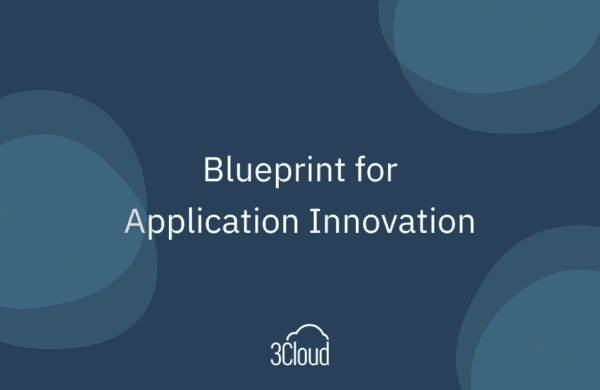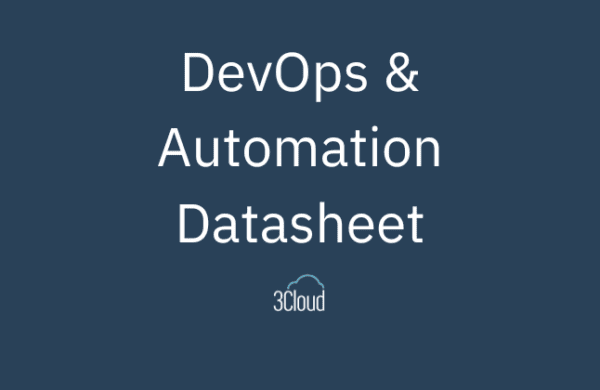Application modernization can unlock organizational agility, giving you the opportunity to meet your users’ needs today and tomorrow. It can seem like a win-win and is certainly top of mind for IT leaders today, yet we get a lot of questions about how to secure buy-in across an organization and how to set off on the right foot.
Why Modernize?
By 2024, Generation Z IT leaders will be driving innovation across industries and self-disrupting enterprises every three months, according to Gartner Research. At the same time, the needs and expectations of this new generation will begin driving business priorities, as they make up a growing percentage of any organization’s customer or user base.
As a result, organizational agility is now viewed as the top factor for lasting success. Even so, application modernization can feel like a big-ticket item, unless you ask the following question:
How much does your legacy application cost your business?
This is a tough line of inquiry, but it’s essential for determining whether you need to modernize and, from there, getting buy-in across the organization. And it can be broken down many ways:
- How many hours per week are spent on tasks that could be automated?
- When hiring for IT, are you limited to a pool of less-than-ideal candidates, because few people know or want to work with your technology? Are you losing talent you’ve invested in because they don’t want to work with outdated technology?
- Even if your software is meeting the needs of customers today, is it flexible enough to adapt as needs change in the coming years (or even months)?
- Is your software built on top of another platform–hardware, third-party software, or an older operating system–that has become outdated, causing the cost of maintaining it to spike?
- Has your market changed as a result of the COVID-19 pandemic? How about your internal processes? Have you been able to adapt?
Take a moment to quantify some costs of not modernizing, and you’ll be left with a powerful response in the age-old “If it ain’t broke, why fix it?” debate.
What’s Next?
Let’s say your organization is ready for app mod. Before we cover where you should start, let’s look at how most app mod projects actually get off the ground, and why starting this way can lead to problems down the line.
A Common App Mod Mistake: Starting with Technology
In many modernizations, you have to get off an older, outdated platform or someone has left the organization, leaving you more or less forced to migrate. You might go into the project simply wanting the new software to do exactly what the old one did. But approaching app mod purely from the perspective of technology can lead you to overlook something much more important: your critical business priorities.
The Solution: Start with Priorities
Agile methodology has taught us that priorities shouldn’t be set via a top-down approach, and that the insights which can make an application and business more impactful and high-performing in the long-run often come from end users. Before launching your app mod project, you must develop a shared understanding of business priorities and embrace the people who use your legacy system as part of that process. What will make not just your technical stack–but your entire offering or service–better? You can answer this one of two ways:
- Conduct an internal audit and discovery interviews
- Enlist the help of an app mod partner (recommended)
We don’t just recommend a partner at this stage because we happen to be in the business of providing modern software solutions. The value of a third-party perspective comes down to basic psychology. In 2019, a Scientific Reports study confirmed that people give clearer, better advice to others than to themselves. Using VR, researchers placed people on both sides of a counseling session, as themselves and as Sigmund Freud. When participants got to embody the venerable doctor, they had better outcomes working through their own problems than participants who simply tried to imagine their situation from a third perspective. For you, working with a partner can help uncover unexpected wins for your organization’s long-term success and future readiness.
Prepare to Measure Outcomes
Before launching into modernization, you’ll also want to get things in place to measure outcomes and track performance related to those key business priorities. Perhaps delivering new features on time is a priority for your business. Almost half of all IT projects are late, so this is a top concern across many industries. What’s your average time to fulfill user requests currently? If reducing technical debt is a priority, how big is your backlog of bug tickets to start?
In addition to these more qualitative measures, there may be quantitative outcomes to set up for as well. For example, if you want users to be happier with your platform, seek user feedback and conduct a survey now. Understanding your baseline will leave you well prepared to track and report on progress.
Decide Whether You’ll Build or Buy
If you’re on the fence about building a custom application or buying something off the shelf, consider the following:
- Buy – Organizations that buy, or build some custom code on top of another product, almost always have to ask employees or customers to change behavior to match the software purchased. In addition, if your legacy solution brought you a strategic advantage, you’re unlikely to retain that using software your competitors have access to as well.
- Build – Building a custom application doesn’t mean you have to go it alone or pull valuable team members off other projects. Look for an experienced app mod partner and you’ll be able to have the best of both worlds: software customized to your priorities that’s also delivered at budget, on time, and done right the first time.
Summary: Your Getting Started Checklist
✅ Calculate the hidden costs of your legacy system
✅ Identify and communicate business priorities
✅ Get metrics in place
✅ Decide whether you’ll build or buy
Stay tuned for upcoming posts where we’ll explore picking the right platform (between Microsoft Azure, AWS, and Google), staying on budget with app mod, and more.




